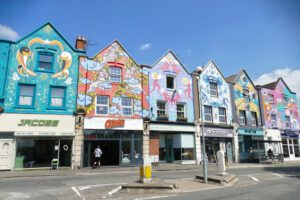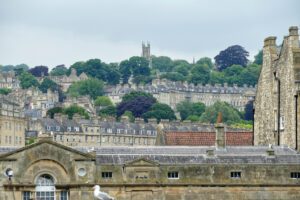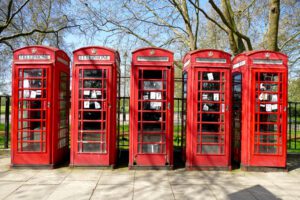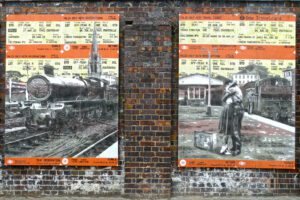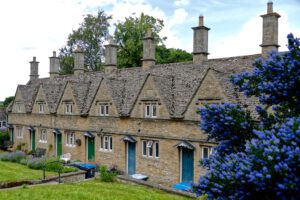Cheltenham offers a very special mix: the city is historic yet trendy, sophisticated yet vibrant, cosmopolitan yet deeply rooted in the English countryside. Even in a single day, Cheltenham presents itself as an inspiring, diverse, and absolutely worthwhile city break.
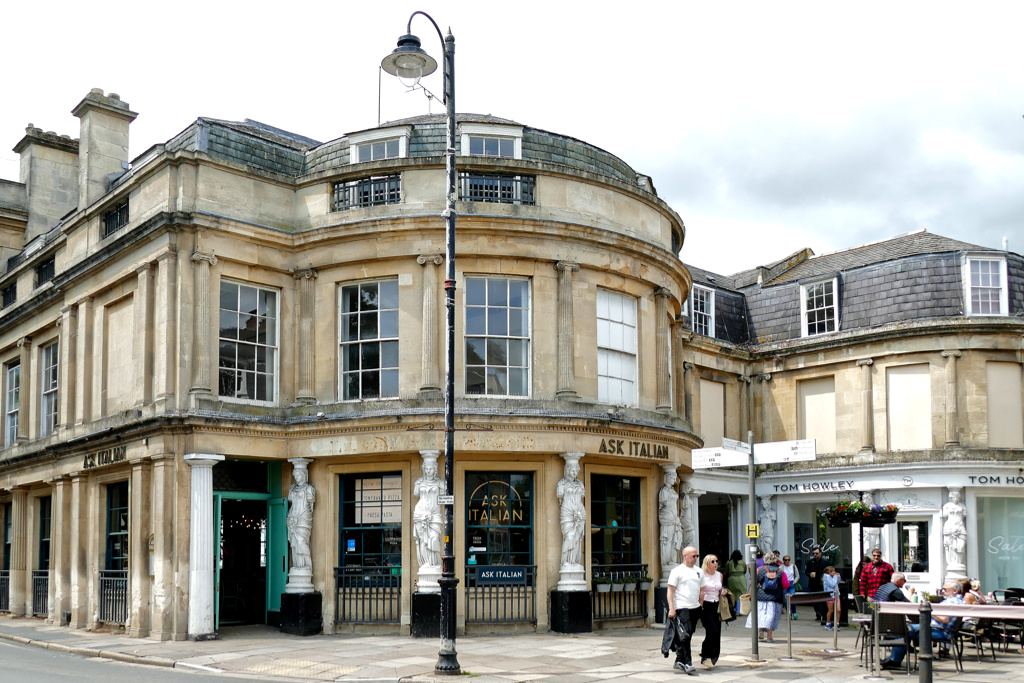
Cheltenham
I’m not sure what I was expecting when I chose Cheltenham as a stopover on my Cotswolds road trip. I think I had such high expectations of the idyllic villages of the legendary Cotswolds that I didn’t give much importance to the other stops on my trip.

And honestly, I think that having no specific anticipations and just absorbing what’s waiting around the corner often is a surefire recipe for a good time: when you don’t tick off must-see landmarks on a list, but simply let yourself drift through the streets. Alleys lure you off the beaten track, shops and cafés beckon you for refreshments, and green spaces provide the respite you need to continue meandering crisscross town.

I love the regularity of British architecture; it doesn’t necessarily have to come from a particular era. Somehow, it suits my sense of order.
As I said, the main reason for my recent trip to England was a trip through the Cotswolds. Nestled on the edge of this quintessentially English area, Cheltenham is a town in Gloucestershire known for its elegant Regency architecture, rich cultural scene, and world-famous horse racing. Often described as the proverbial cultural capital of the Cotswolds, Cheltenham offers a pleasant blend of history, sophistication, and modern vibrancy.
Rising to Fame
Cheltenham’s rise to fame began in the 18th century when mineral springs were discovered in the area in 1716. At that time, spa towns like for instance Bath were fashionable retreats for the upper class. Cheltenham merrily capitalized on this trend. In 1788, King George III visited to take the waters, and his endorsement sparked a boom in the town’s popularity. The Georgian elite flocked to Cheltenham, transforming it from a quiet market town into a fashionable resort.
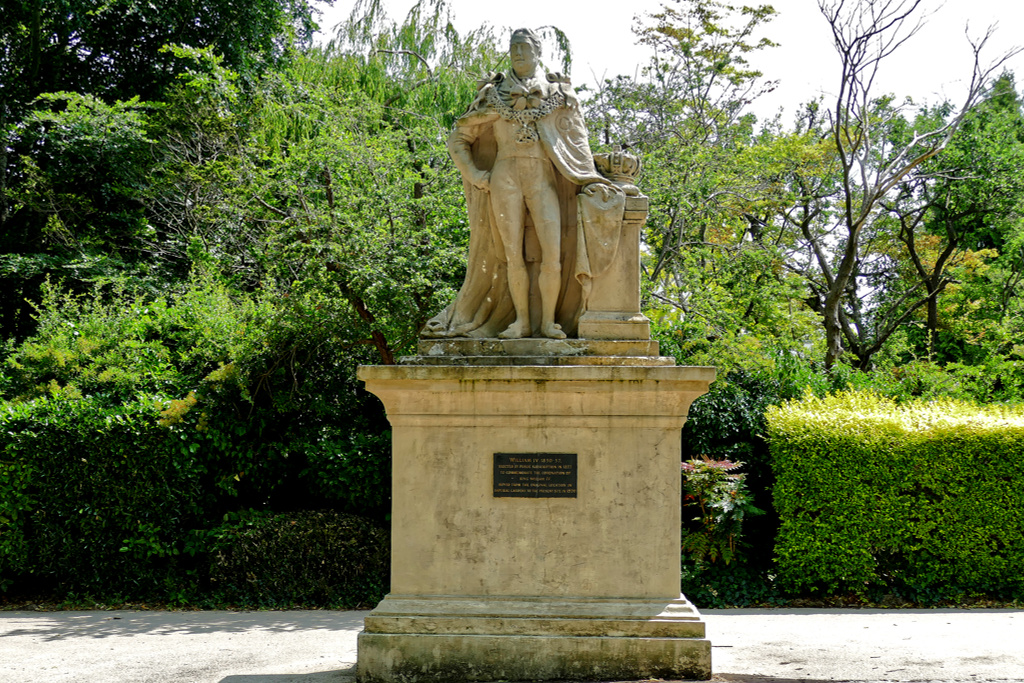
The legacy of this era is still visible in the town’s thoroughly landscaped parks and impeccable gardens, wide promenades, and graceful Regency buildings from the late 18th and early 19th centuries that lend the town an air of refined elegance.
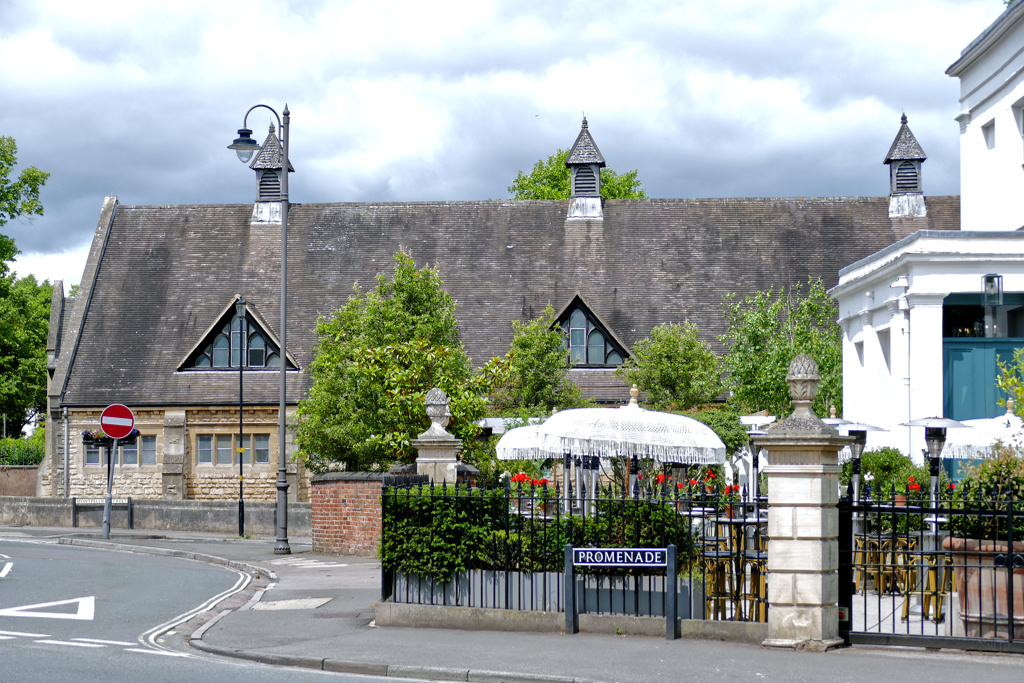
Today, the most prestigious event associated with Cheltenham, however, is the Cheltenham Gold Cup, held annually in March at the local racecourse. This prestigious horse racing event is a highlight of the National Hunt calendar, which attracts over 250,000 spectators.
Montpellier
The district where Cheltenham’s glorious past began is Montpellier. To this date, it is famed for its magnificent terraces, intricate ironwork, and the iconic Montpellier Rotunda, which was initially a SPA and now houses a first-class restaurant.
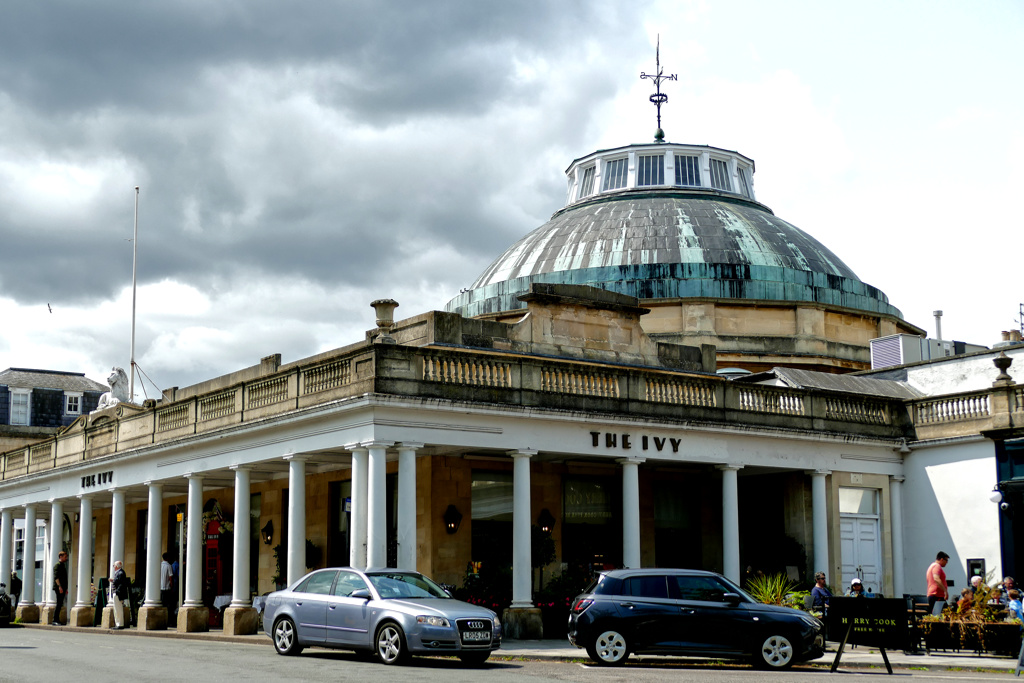
In 1801, Henry Thompson acquired a plot of land after discovering mineral springs. A few years later, he commissioned a wooden pavilion, which was later replaced by stone structures. This was the birth of the iconic Rotunda, designed by George Underwood and John Buonarotti Papworth.
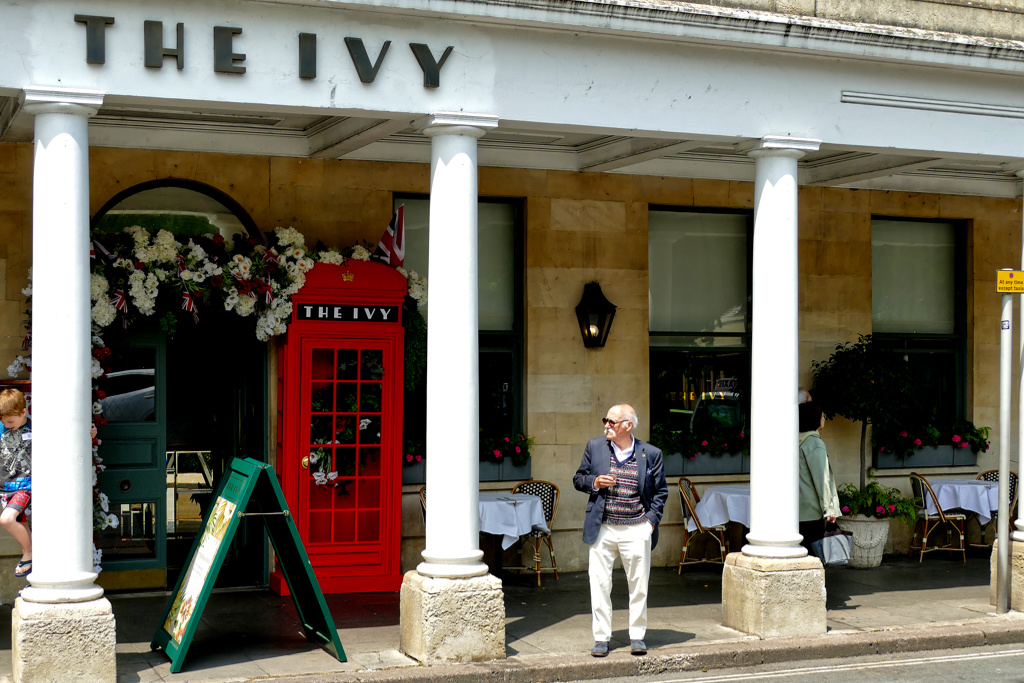
Naming the district of Montpellier, by the way, was a deliberate marketing move. The name evoked the glamour, style, and elegance of its refined southern French namesake, thus appealing to wealthy and sophisticated visitors.
And indeed, moneyed bathers enjoyed the Pump Room with its grand ballroom, as well as the extensive promenades through the manicured gardens. But the area was also at the forefront of commerce. After all, the covered Montpellier Arcade, built in 1832, was one of the first covered shopping arcades in Great Britain.
Yet, the times they are a-changin’, and in 1893, Cheltenham Borough Council acquired the SPA and gardens. The greenery became a public park with amenities such as bandstands, croquet courts, and lawn tennis courts for the general public.
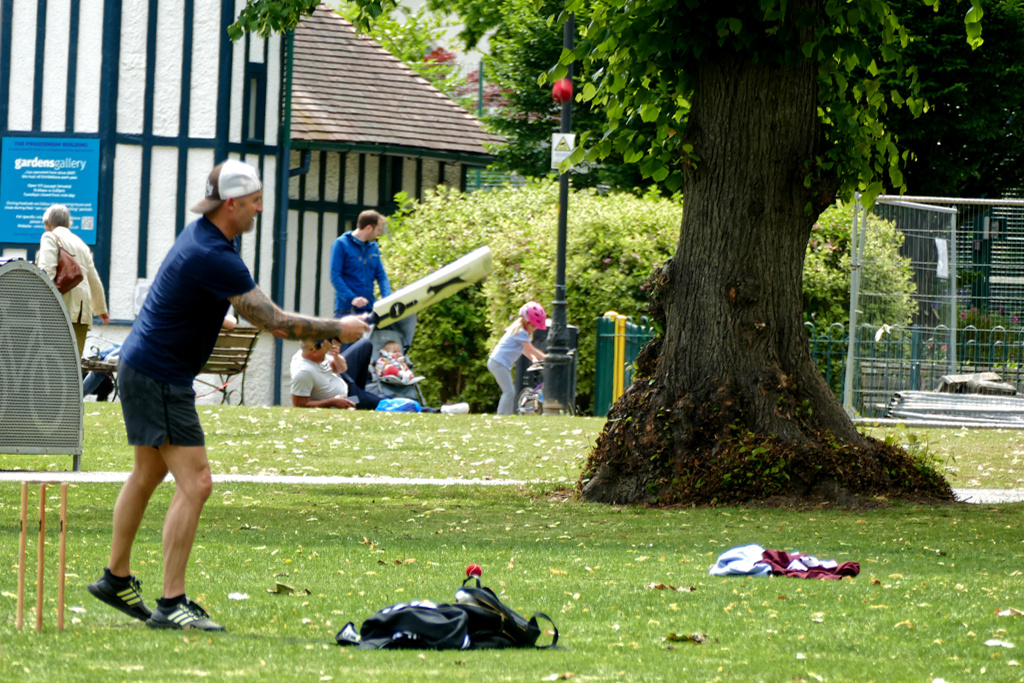
From its roots as a sophisticated Regency-style SPA district, Montpellier has evolved into a vibrant neighborhood where history meets stylish urban energy.
Promenade
From Montpellier, the so-called Promenade leads towards Cheltenham’s city center.
Hard to imagine that the Promenade used to be nothing but a marshy path connecting the High Street with the Imperial Spa. However, in 1818, leafy elms and horse-chestnut trees were planted to transform the area into a genteel spot where the then-rich and famous could socialize and promenade.
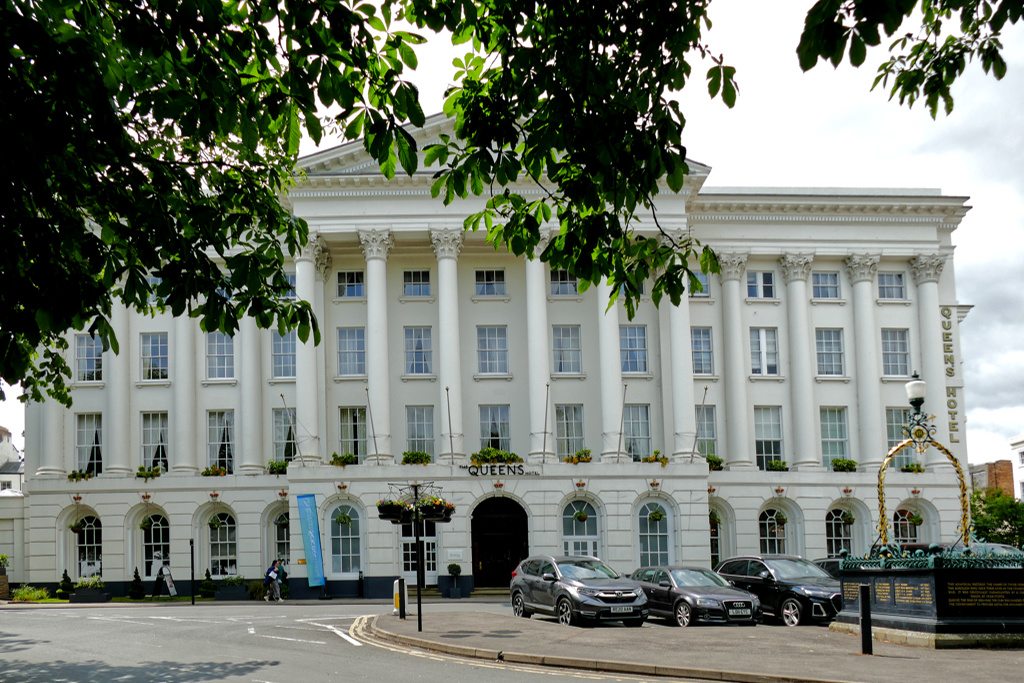
Then, by the 1820s, George Allen Underwood designed the elegant classical terraces which are typifying Cheltenham’s signature cream-stone Regency architecture.
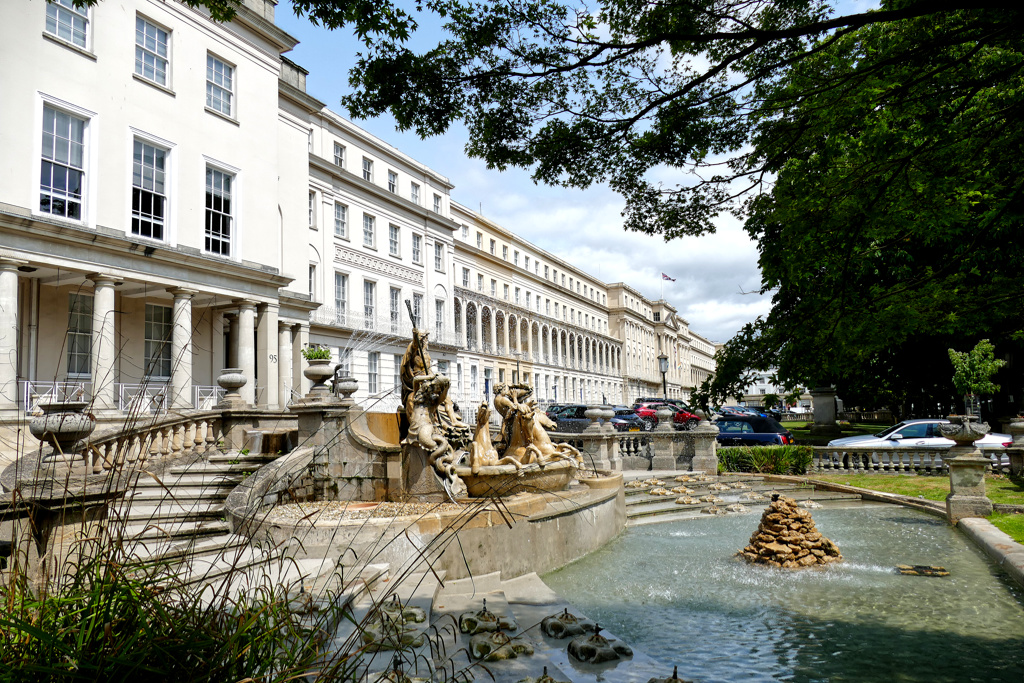
In addition, the promenade was embellished by a beautifully planted strip of greenery and flower beds. At the strip’s northern end stands the so-called Neptune Fountain. Designed by Joseph Hall in 1893, this grand structure, made from Portland stone, was inspired by the famous Trevi Fountain in Rome, obviously.
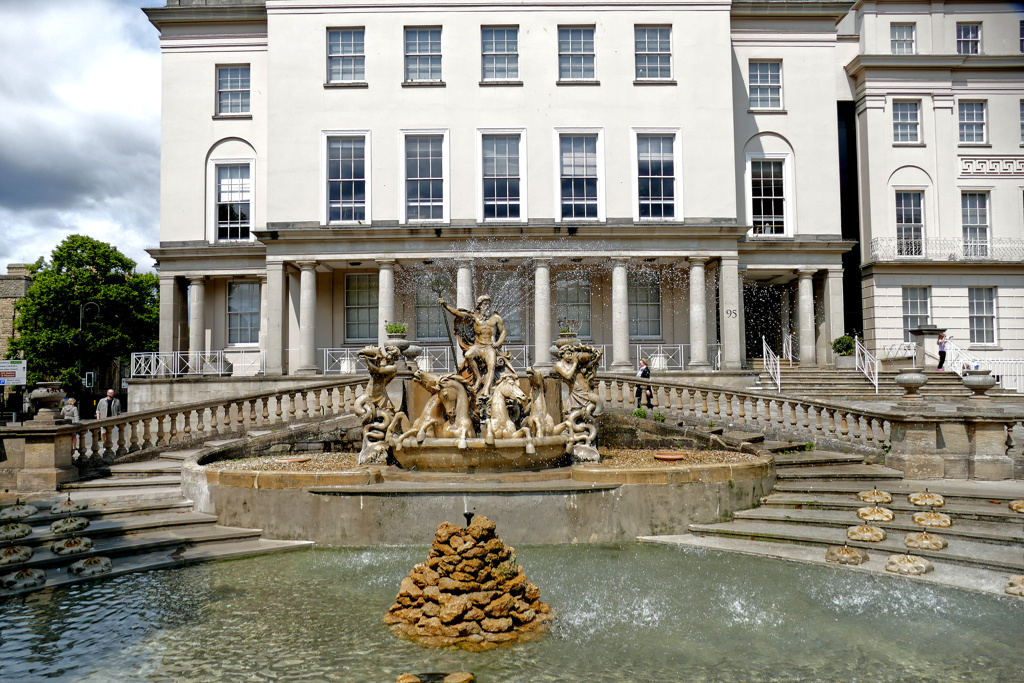
Today, the Promenade is Cheltenham’s main shopping hub with a mix of high-end shops, chain stores, and lovely eateries. On a regular basis, farmers’ market stalls line the avenue.
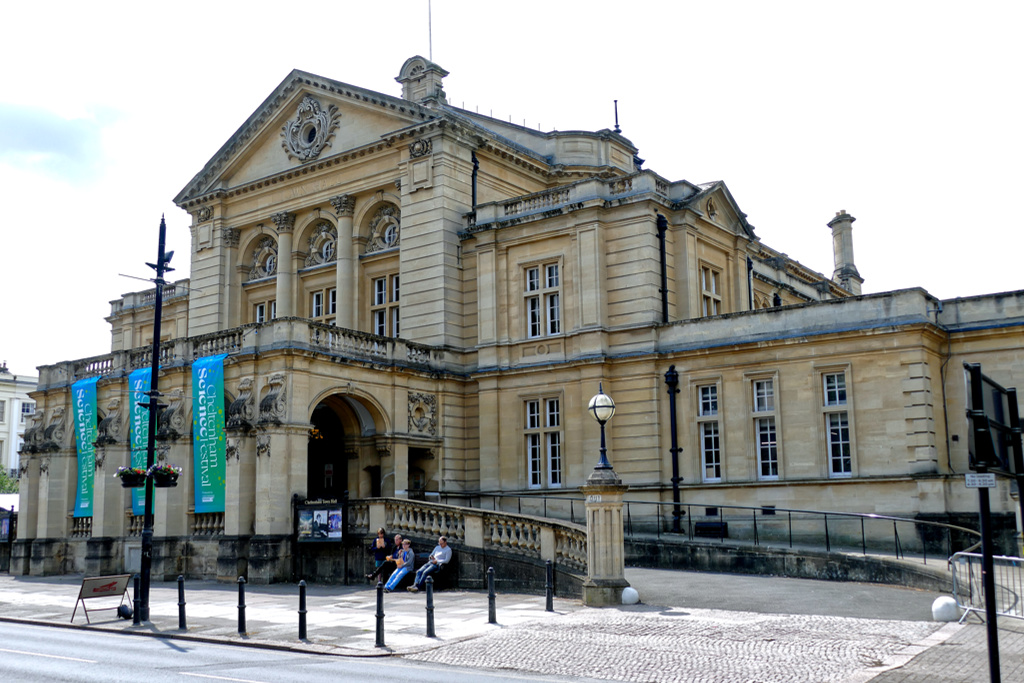
All in all, the Promenade is Cheltenham’s historical and commercial spine linking its sophisticated Regency past with its vibrant present.
Pittville
Before we finally get to explore Cheltenham’s downtown district, let me quickly introduce you to another intriguing area on the opposite side of town.
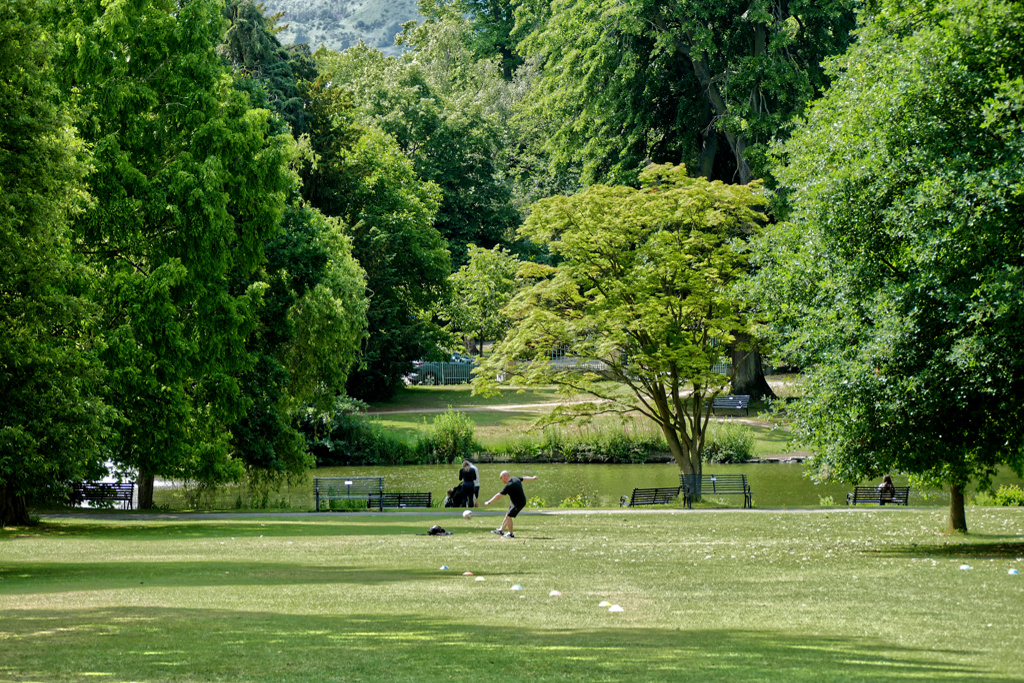
Pittville, sometimes also written Pitville, is a charming Regency-era suburb. Lawyer‑turned‑developer Joseph Pitt, hence the name, founded it in the early 19th century. He dreamed big, as his vision was a self‑contained SPA town rivaling Montpellier.
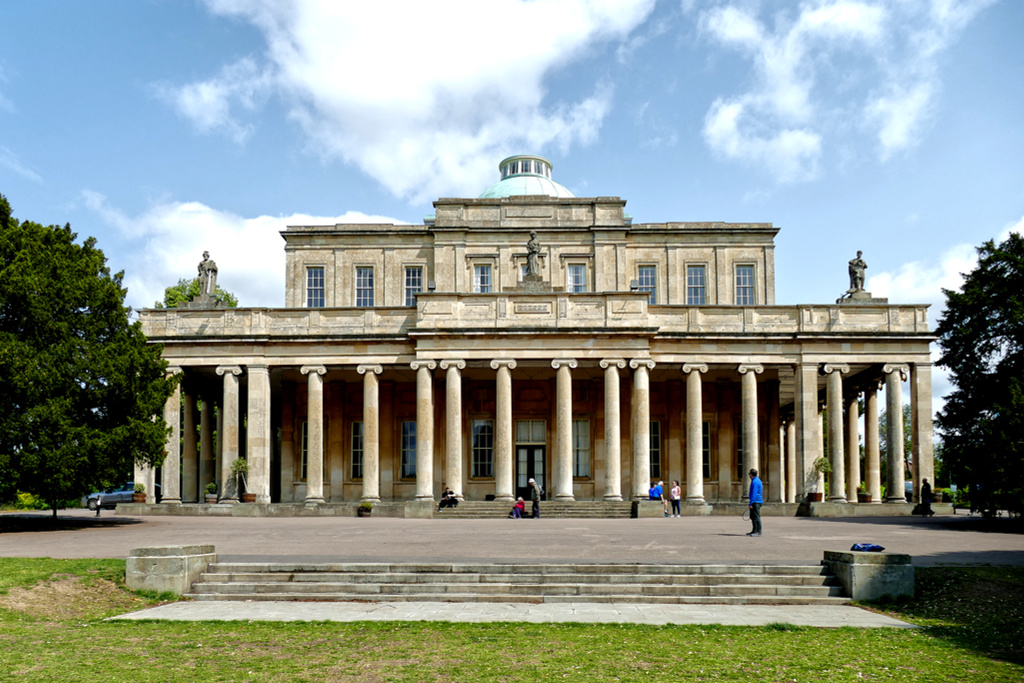
Therefore, it had to be completed with its own Pump Room, formal walks, pleasure grounds, and housing up to 600 residences. With 216 houses built by 1860, Pitt’s full ambitions weren’t realized, obviously.
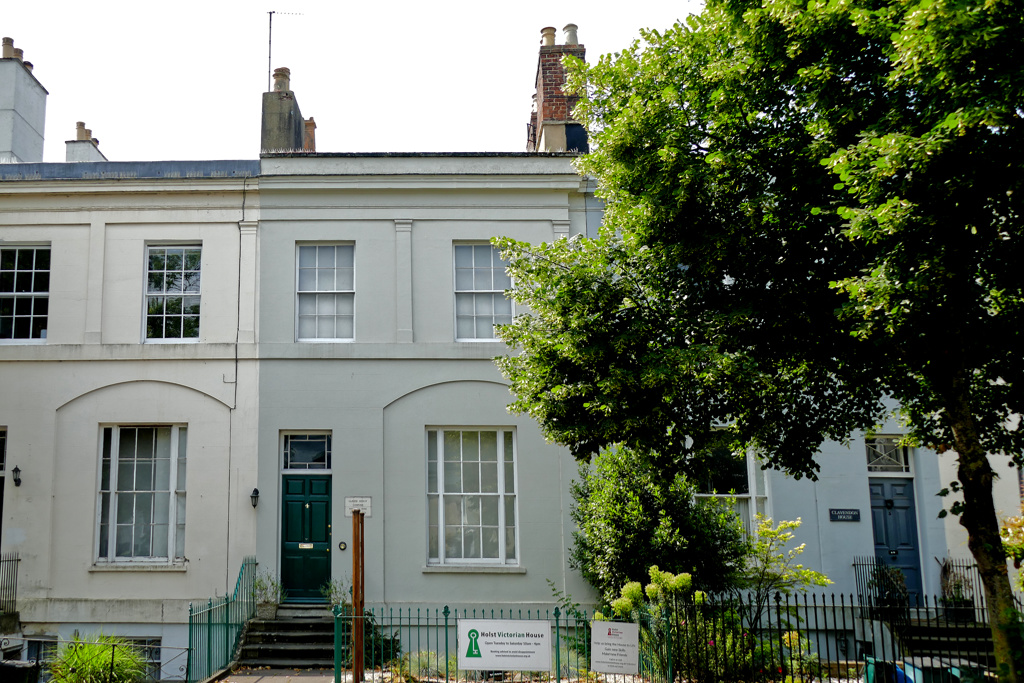
Nevertheless, the area remains a stellar example of Regency suburban design, with elegant villas and crescents echoing period grandeur.
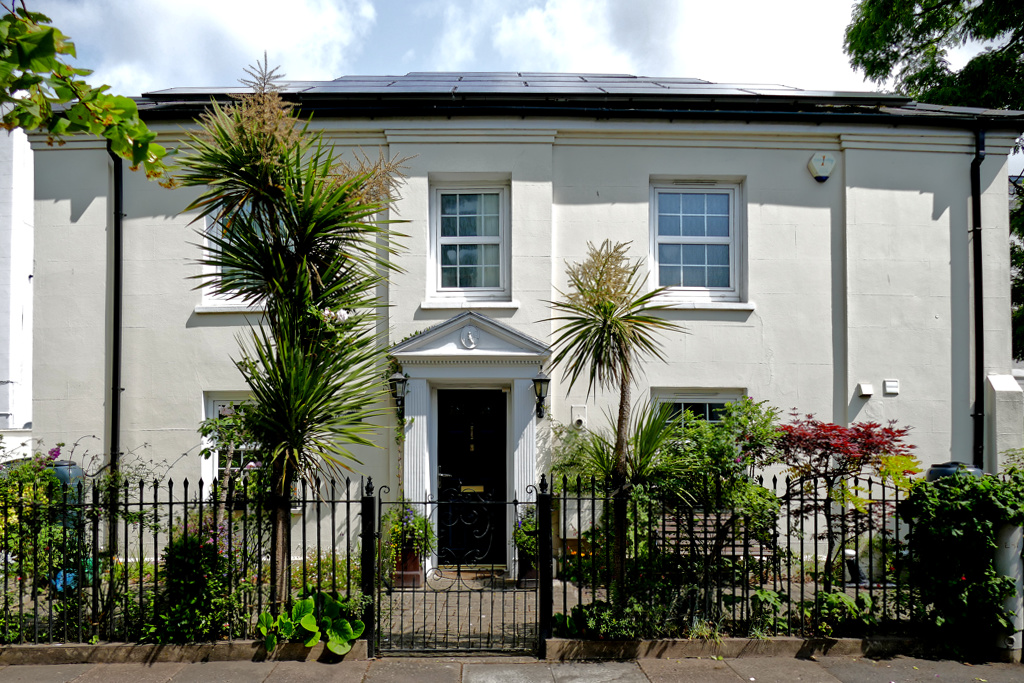
Since it’s ideal for a relaxing outing, Pittville makes a phenomenal addition to any visit to Cheltenham. In addition to lush greenery, the park also consists of an ornamental lake as well as a boating lake with boat hire and fishing. There’s a nine-hole pitch-and-putt, a skatepark, tennis courts, a playground, lovely cafés, and much more.
Downtown
But now let’s finally explore Cheltenham’s downtown area and its urban, trendy, and artsy side.
Apart from the posh Promenade that I introduced above, the main shopping area is around High Street. As I pointed out a couple of times, I’m not very much into shopping, anyway, and I definitely do not feel the urge to spend my precious time in stores during city trips. But there is far more than just chain stores in the center of Cheltenham.
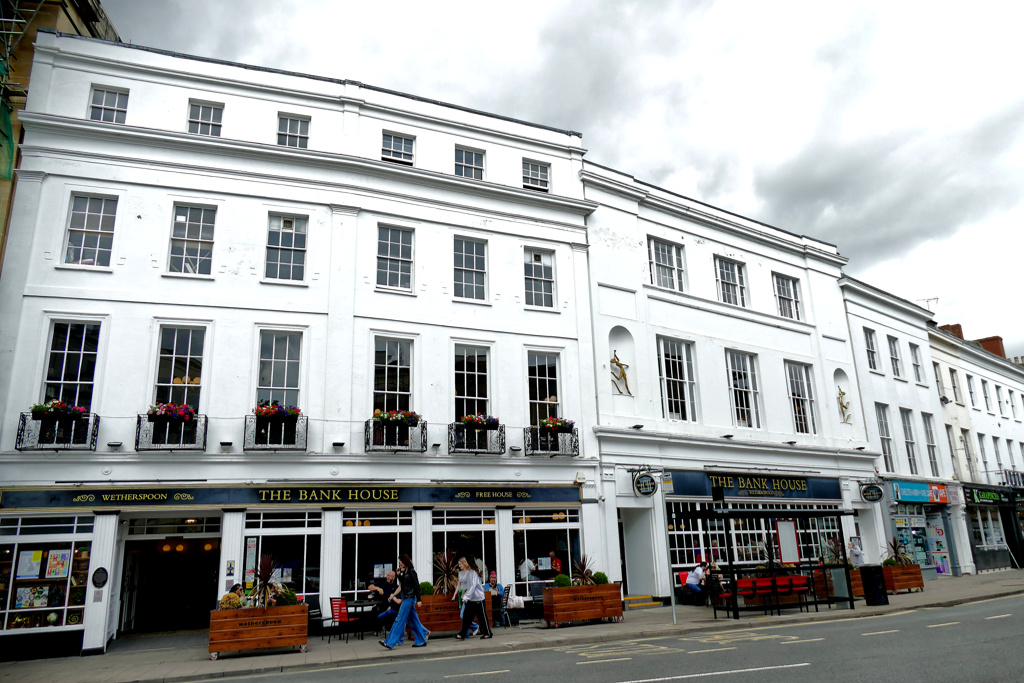
For instance, the Brewery Quarter, a lively downtown hub. Originally founded in 1760 as Gardner’s Brewery, it later became Cheltenham Original Brewery in 1888 and then Whitbread Flowers Brewery. Regardless, brewing ceased in 1998. Yet, if you’re into local craft beer, Hawkstone Brewery, formerly known as Cotswolds Brewing Co., is based in Cheltenham and recognized for its lager.
However, the former brewery plant has been redeveloped and is now a mixed-use hub for shopping, dining, leisure, and entertainment. Also, you can book yourself into the Premier Inn* if you want to stay right in the heart of the action.
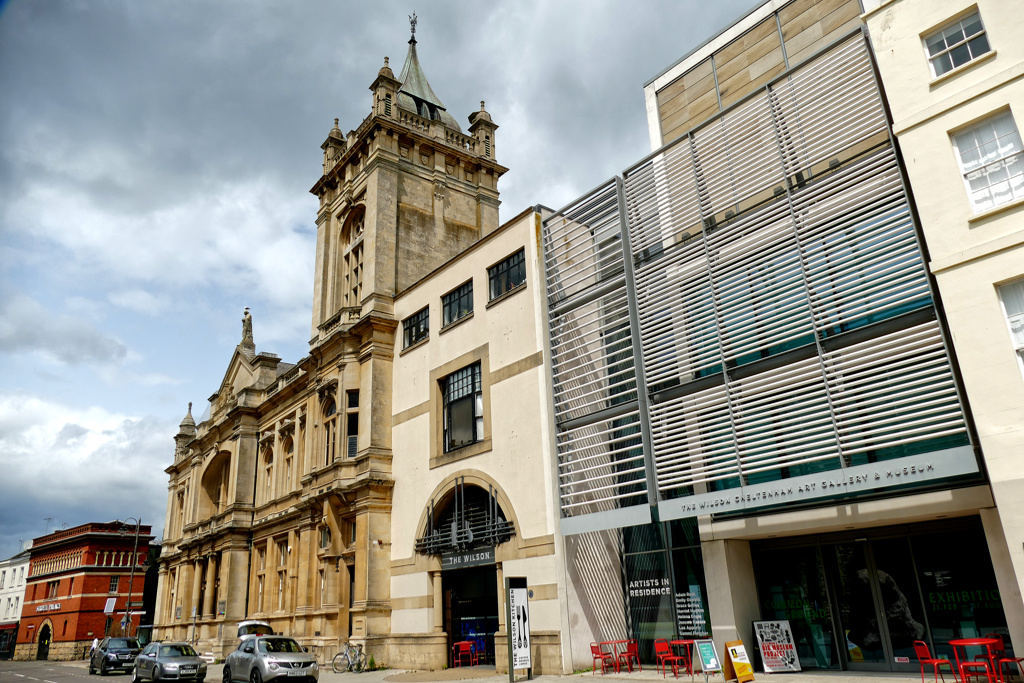
While the Quarter is the central entertainment zone, the nearby streets offer a charm of their own with small independent shops and a wide range of eateries.
Going to the Chapel
Cheltenham is also home to a surprisingly large number of houses of worship, reflecting its diverse and historic community. Of the more than 70 churches, I’d like to highlight first and foremost the Cheltenham Minster.
Formally known as Saint Mary’s, the Minster is the oldest building in Cheltenham and a remarkable piece of the town’s spiritual heritage. Nestled discreetly just behind the High Street, this medieval church offers a quiet counterpoint to its bustling surroundings.
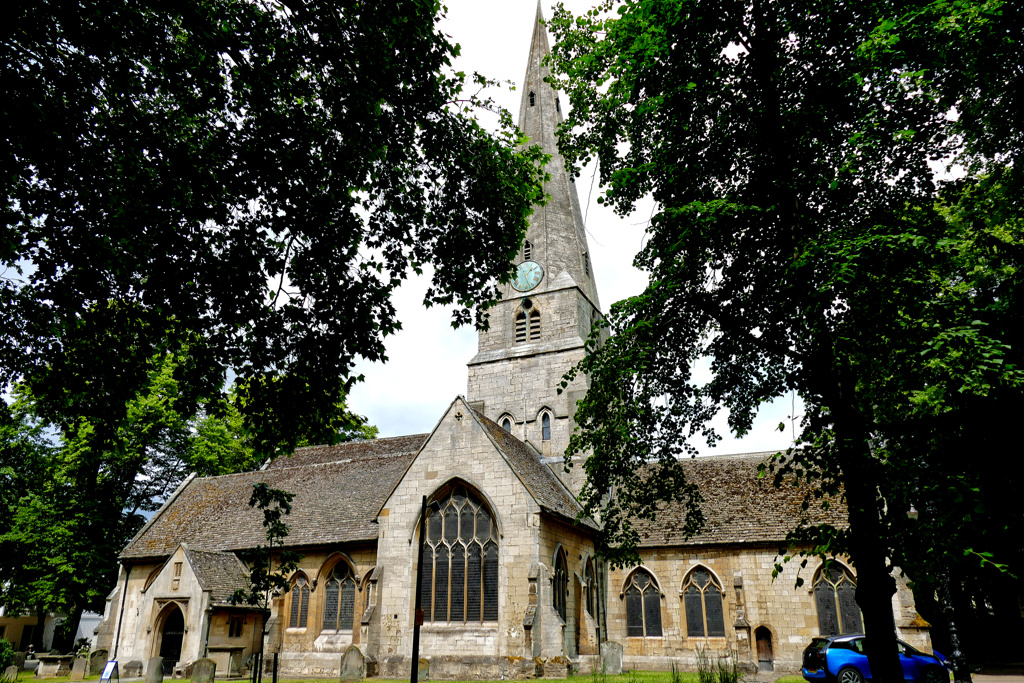
The origins of the Minster date back to the 12th century, making it the only surviving medieval structure in Cheltenham. Its architectural style is primarily Gothic, with later additions and restorations contributing to a blend of historic character. The church’s tall, graceful spire is a notable landmark.
Inside are beautiful stained glass windows, including some by celebrated Victorian designer Charles Eamer Kempe. The churchyard, with its ancient yew trees and weathered gravestones, adds to the serene charm.
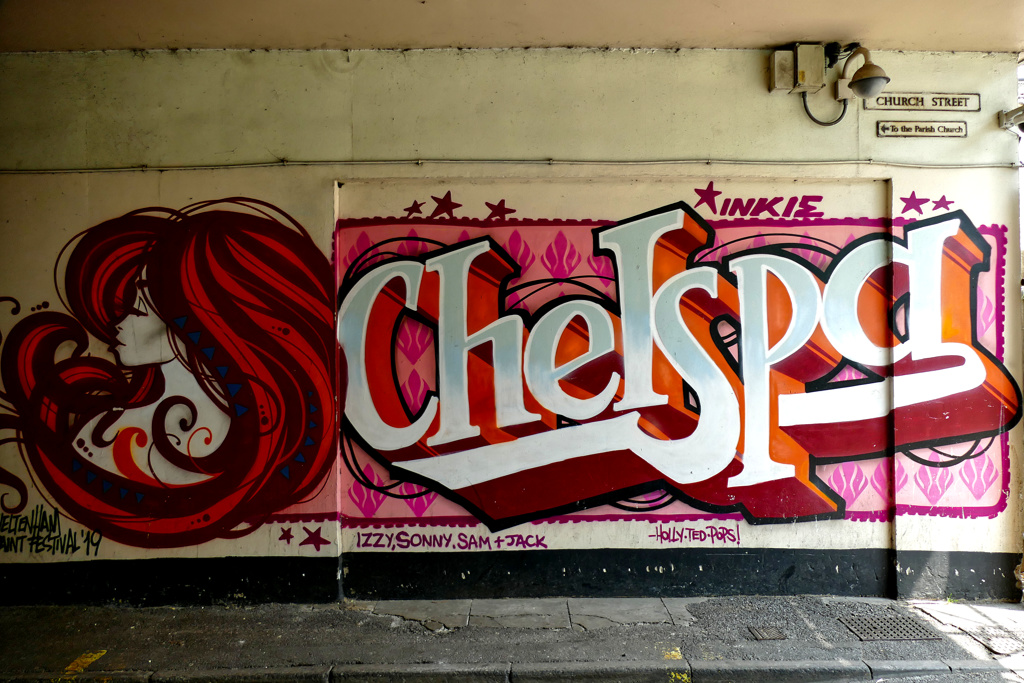
Another outstanding sacred structure is St Gregory’s Roman Catholic Church, whose beauty and atmosphere make it one of Cheltenham’s most treasured landmarks. Located just east of the town centre on St James’ Square, the church is renowned for its Gothic Revival architecture.
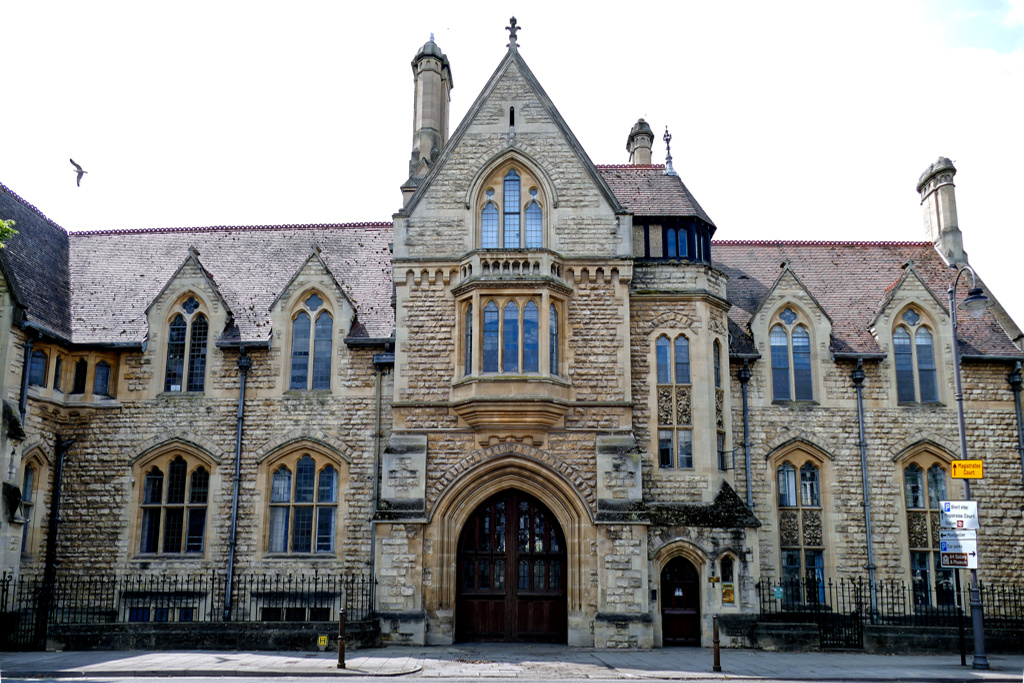
The foundation stone of St Gregory’s was laid in 1854, and the church was designed by the celebrated architect Charles Hansom. Drawing inspiration from the French Gothic style. Construction was largely funded by local benefactors.
Urban Art
As a matter of fact, Inkie’s mural next to the churchyard of St Mary’s is the result of Cheltenham’s annual Paint Festival.
You should keep in mind that Cheltenham is also known for several major cultural festivals, including the Cheltenham Literature Festival. It was founded in 1949, which makes it, in fact, the world’s first literary festival. Every spring, the city also hosts a jazz festival that attracts top international artists, and the Cheltenham Music Festival is one of the UK’s oldest classical music festivals, featuring everything from chamber music to large-scale orchestral works.
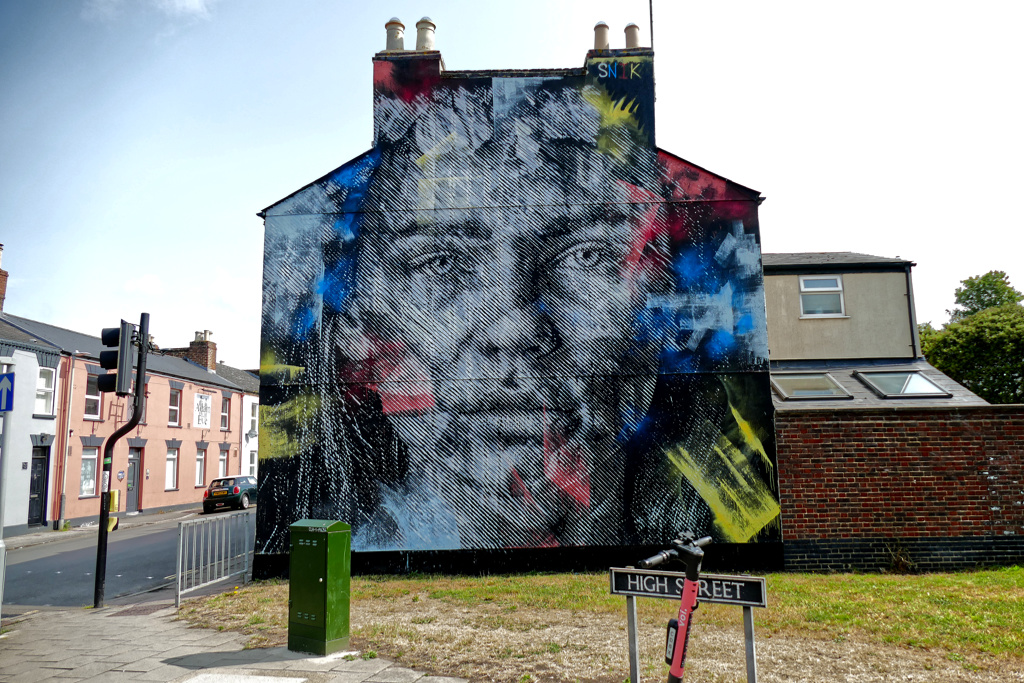
Last but not least, the Cheltenham Paint Festival debuted in 2017 and has since become a staple in every street art enthusiast’s cultural calendar.
The annual festival attracts some of the best street artists from around the world to paint at over 90 locations across the city, creating an eight-kilometer street art trail that showcases everything from large-scale murals to small gems in hidden corners. The art remains, obviously, so visitors can explore the trail on foot or by bike, also outside of festival times, and discover Cheltenham through bold artworks.
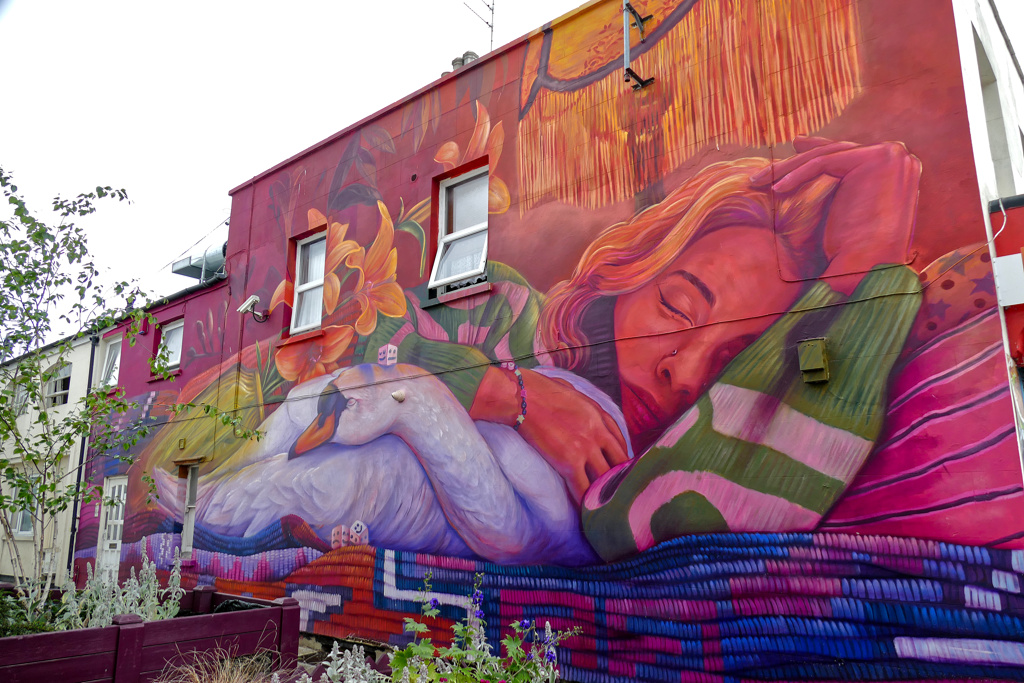
However, introducing all the fantastic street art you can find in Cheltenham is beyond the scope of this general city guide. That’s why I’ve put together exactly that in my post Best Street Art in Cheltenham, namely, the most impressive urban art the city has to offer.
Out of Cheltenham
While Cheltenham offers all the amenities of a modern town, it also provides easy access to the amazing natural wonders of the Cotswolds. If you don’t know, the Cotswolds region is known for its rolling hills, picturesque villages, and scenic walking trails.
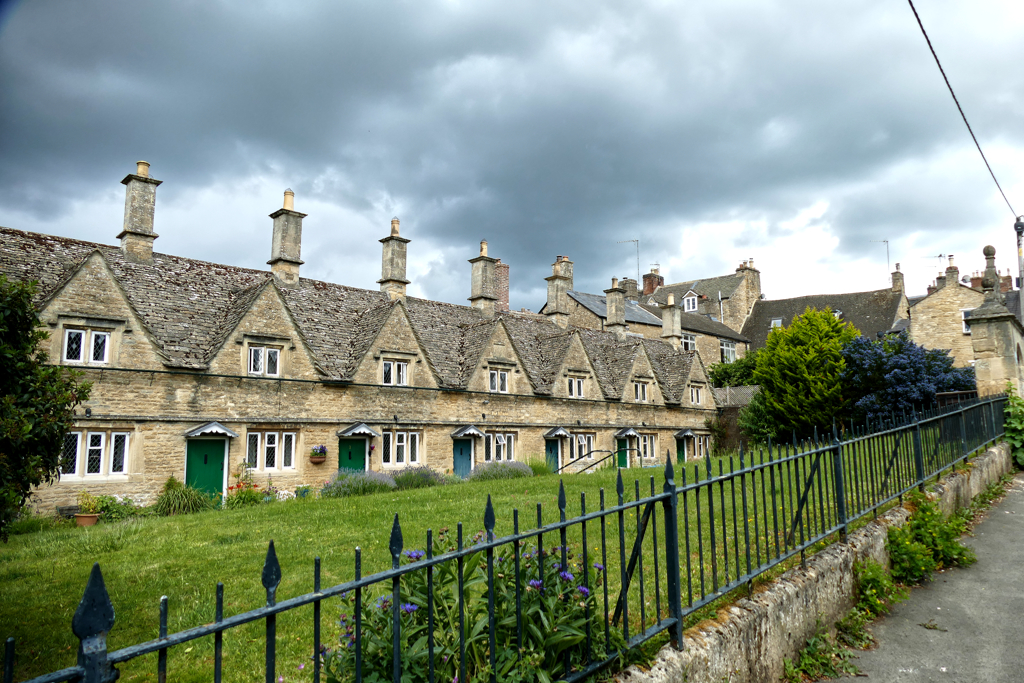
The Cotswold Way, a long-distance walking route, passes close by, offering opportunities for hikers to explore the countryside on foot.
From Cheltenham, it’s really easy and also quite cheap to explore the Cotswolds by public bus. You’ll find an extended and very thorough guide in my post Enchanting COTSWOLDS: Self-Guided Day Tour by Public Bus.
Practical Information
How to Get There
Cheltenham does not have an airport, obviously. The closest airports are Bristol and Birmingham. Both are quickly and easily accessed by train and coach. Also, London‘s Heathrow Airport has regular National Express coaches as well as Megabus connections to Cheltenham. The trip takes about two hours.
Cheltenham also has convenient train connections. The main station is Cheltenham Spa. From here, you have direct train services not only to London‘s Paddington Station and Manchester Piccadilly, where you’ll get in about two hours. There are also frequent connections to Birmingham New Street and Bristol Temple Meads, which take only a bit over half an hour. However, you might want to book tickets online in advance since buying them at the station right before your trip is far more costly.
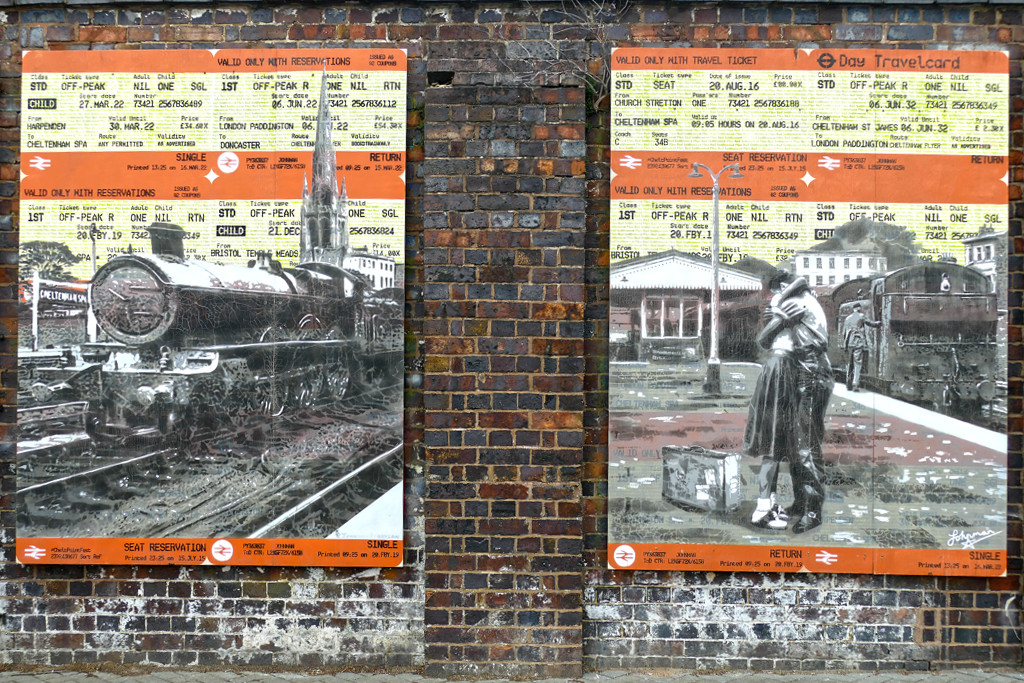
Talking ’bout costs: travelling to Cheltenham by coach is the most budget-friendly option. National Express is the largest coach operator in the United Kingdom, with direct routes from basically all major cities. Megabus and Flixbus offer low-cost fares on similar routes.
Cheltenham’s Coach Station is conveniently located in the city center.
As I said, travelling via Cheltenham is a great option if you want to visit the legendary Cotswolds. If you are interested, make sure to check out my comprehensive posts Enchanting COTSWOLDS: Self-Guided Day Tour by Public Bus
How to Get Around
First of all, Cheltenham’s city center really isn’t that large, hence, you can explore the citycenter easily by walking. However, Cheltenham also has an excellent public transport system consisting of buses. Stagecoach West is the primary bus operator, providing extensive coverage within Cheltenham and the surrounding areas. There are various ticket types, including Dayrider, EveningRider, and single as well as return tickets. Contactless payments are accepted on all coaches.
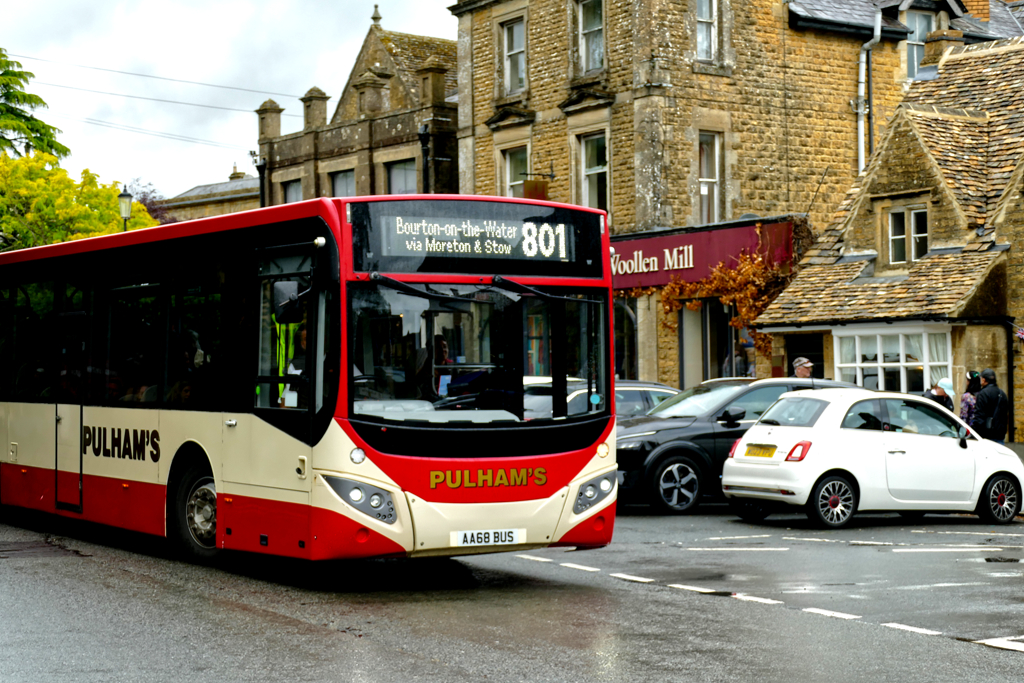
There are also intercity coach services like National Express connecting Cheltenham to major UK cities like London, Birmingham, and Manchester, as well as most of the villages around the Cotswolds. That’s actually how I visited this mesmerizing region, and you can read all about my amazing trip in the post Enchanting COTSWOLDS: Self-guided Day Tour by Public Bus.
Visiting Organized
Although Cheltenham itself has a lot to offer and the nearby Cotswolds can be easily explored by public bus, it can be recommended to join an organized day tour that will get you there safely and back on time. Here are some tours to choose from*:
Where to Stay
Even though Cheltenham isn’t exactly suffering from overtourism, there’s a wide selection of accommodations. After all, it’s one of the gateways to the Cotswolds, making it a great place to stay. The many festivals also regularly attract participants and visitors to the town.
While the Queen’s Hotel* is certainly the most traditional and luxurious, and the Premier Inn* is the most centrally located, there are many lovely accommodation options scattered throughout the town. Use this map to search for one that suits you*:
What and Where to Eat
Cheltenham offers a broad and diverse dining scene, reflecting both its Regency-era charm and its status as a modern multicultural hub.
The city center and areas such as Montpellier and the Suffolks are known for their vibrant dining scene. Here, you’ll find a good mix of independent restaurants and well-known chains offering everything from classic British cuisine to international dishes such as Italian, Indian, Thai, Japanese, and Middle Eastern. Many eateries emphasize the use of local, seasonal ingredients, which is not surprising given that the small, fine farms of the Cotswolds are practically on their doorstep.
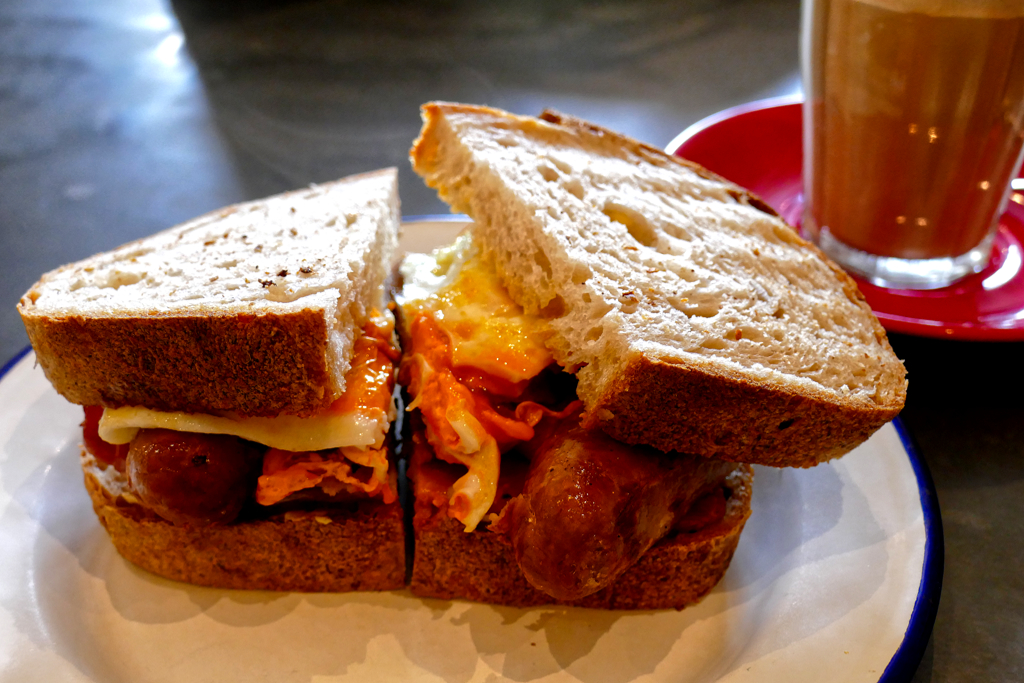
In addition, Cheltenham has a strong café culture, with numerous eateries serving breakfast, brunch, artisan coffee, and homemade cakes.
Cheltenham also hosts food festivals and seasonal markets where you can sample street food and regional specialties.
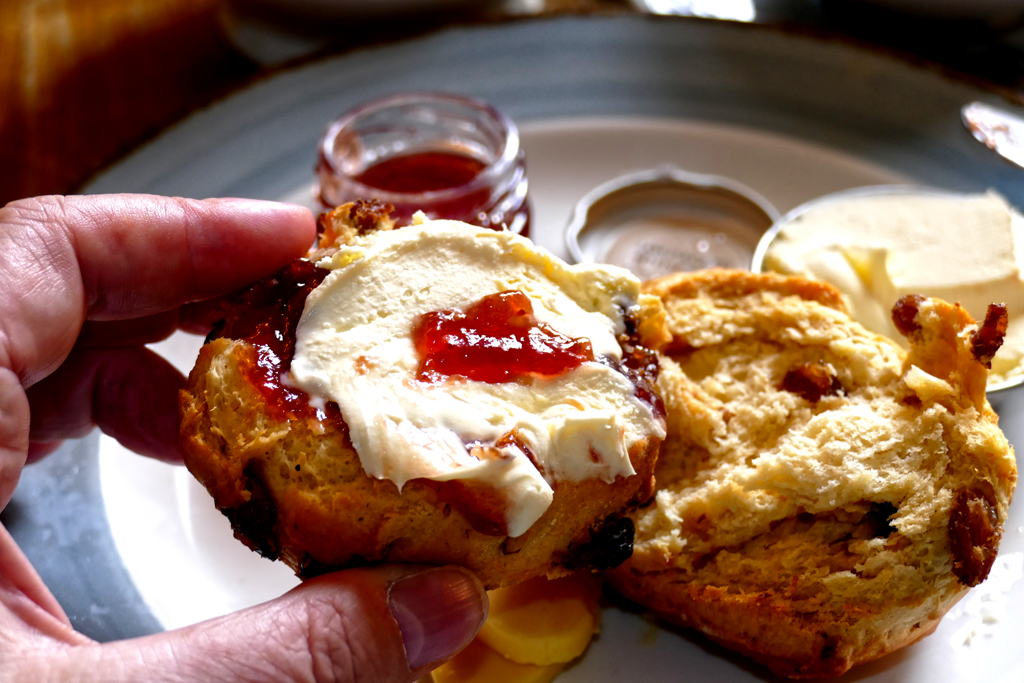
In short, Cheltenham’s restaurants combine quality, variety, and atmosphere. Whether you’re in the mood for fine dining or just a quick bite to eat, you’re sure to find something delicious.
Cash And Cards
Sterling is the world’s oldest currency that has been in continuous use since its inception. It is the currency not only of the United Kingdom but also of nine of its associated territories.
The term Sterling refers to the currency as a whole. It is divided into Pounds and Pence. The exchange rate is 1 US$ = 0,74 GBP, respectively 1 €UR = 0,85 GBP as of September 2025, but you can check the conversion on this page.

Credit cards are accepted everywhere. Especially if your card is equipped with NFC, you can pay quickly and easily just by tapping your card. As a matter of fact, during my entire stay in England, I didn’t pay cash one single time.
Connection and Communication
Since June 2017, no roaming charges have applied within the EU with a European mobile phone contract. This applies in all 27 countries of the European Union as well as in Iceland, Liechtenstein, Norway, and Great Britain – temporarily even after Brexit.
Obviously, you can connect to the internet without any issue at basically every museum, eatery, or café, and, of course, your hotel.
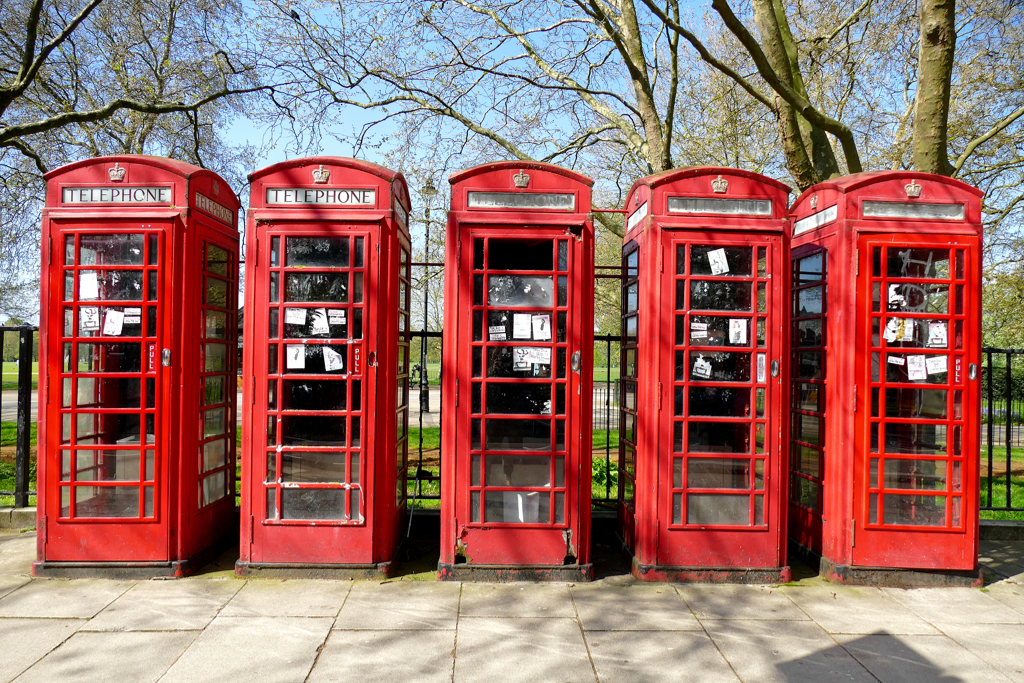
If you insist on being online 24/7, you can get a SIM card, obviously. However, not every card that you buy in the UK will offer free EU roaming! EE and Three UK still offer this service, O2 only on some of their plans, and Vodafone UK doesn’t offer it at all. Hence, if you intend to use your local SIM card also in continental Europe, you have to check your options very thoroughly.
In Great Britain, they use plug type G. Their voltage is 230 V and the frequency 50 Hz. Whereby, since nowadays, all these chargers have integrated adapters, in general, the voltage and frequency don’t really matter.
By the way, you’ll find this information and many more comprehensive travel tips in my post World’s Most Complete Travel Information. It’s an indispensable globetrotter classic.
Map
On this map, you can spot all the alluring landmarks you shouldn’t miss when visiting Cheltenham. Clicking on the slider symbol at the top left or the full-screen icon at the top right will display the whole map, including the legend.
Pinnable Pictures
If you choose to pin this post for later, please use one of these pictures:
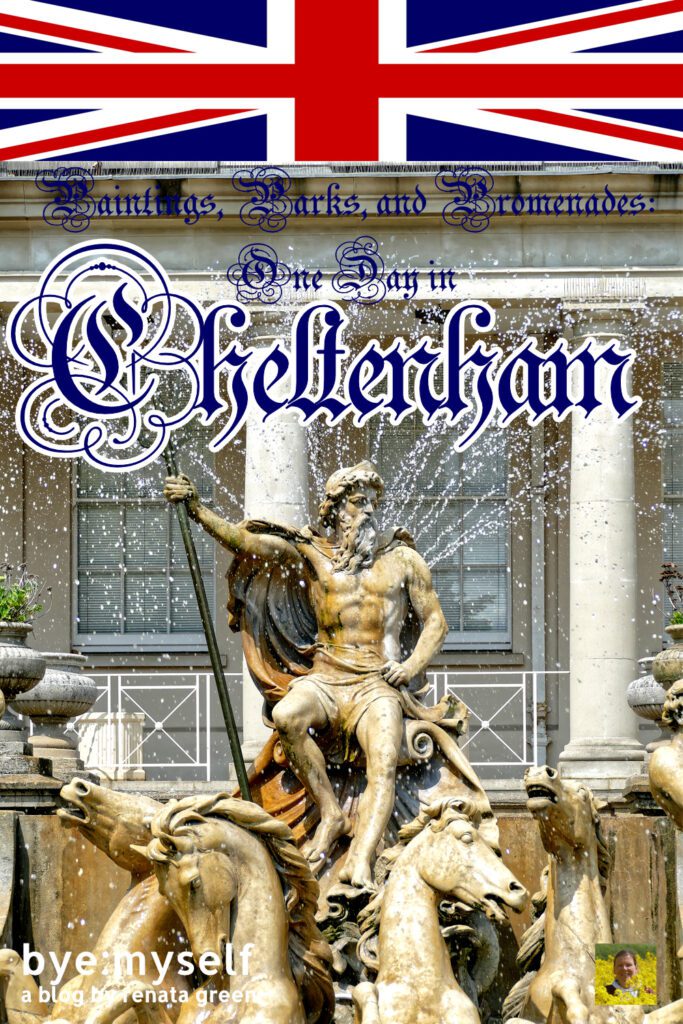
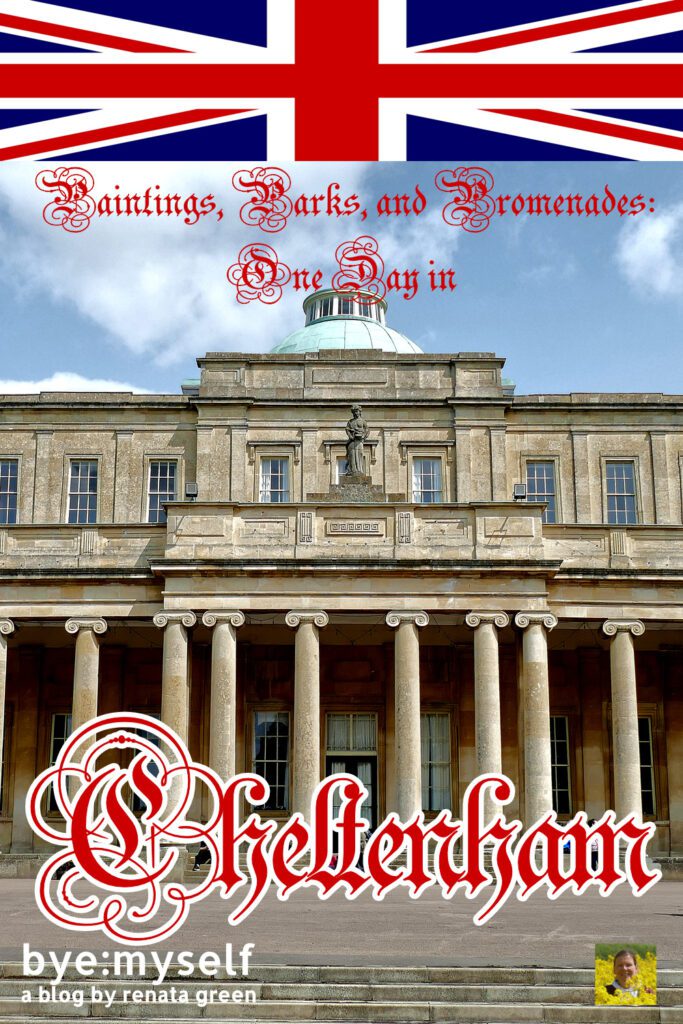
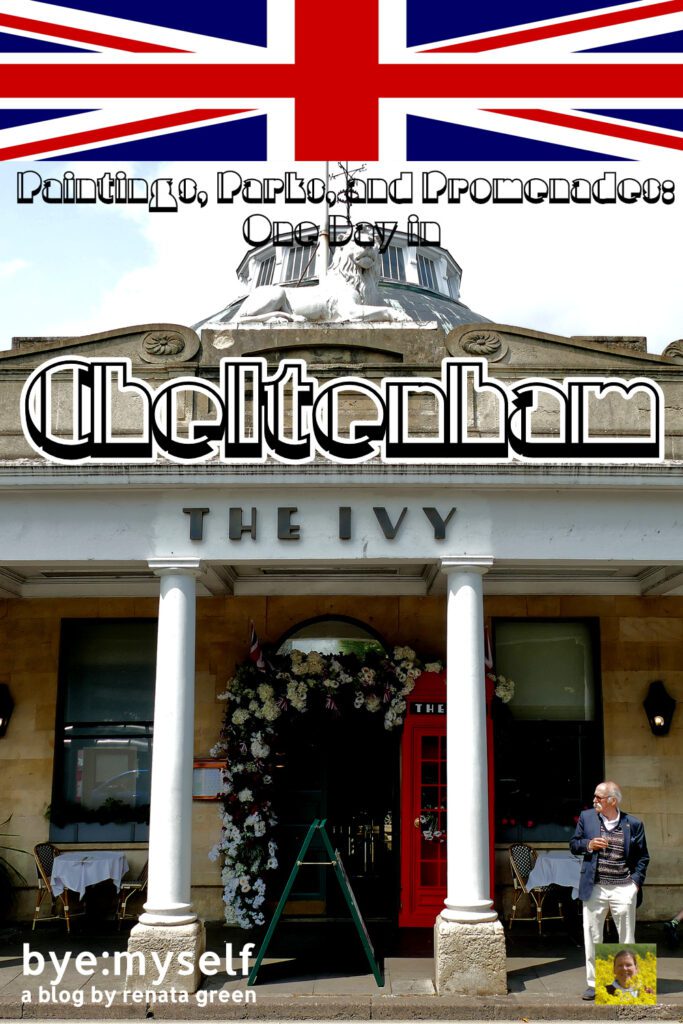
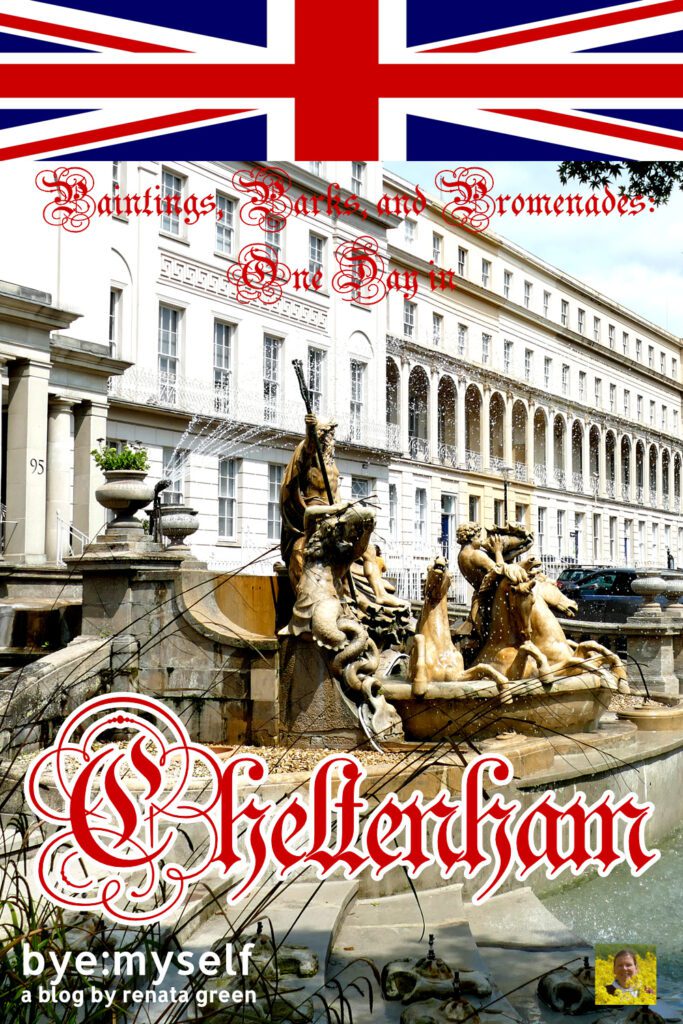
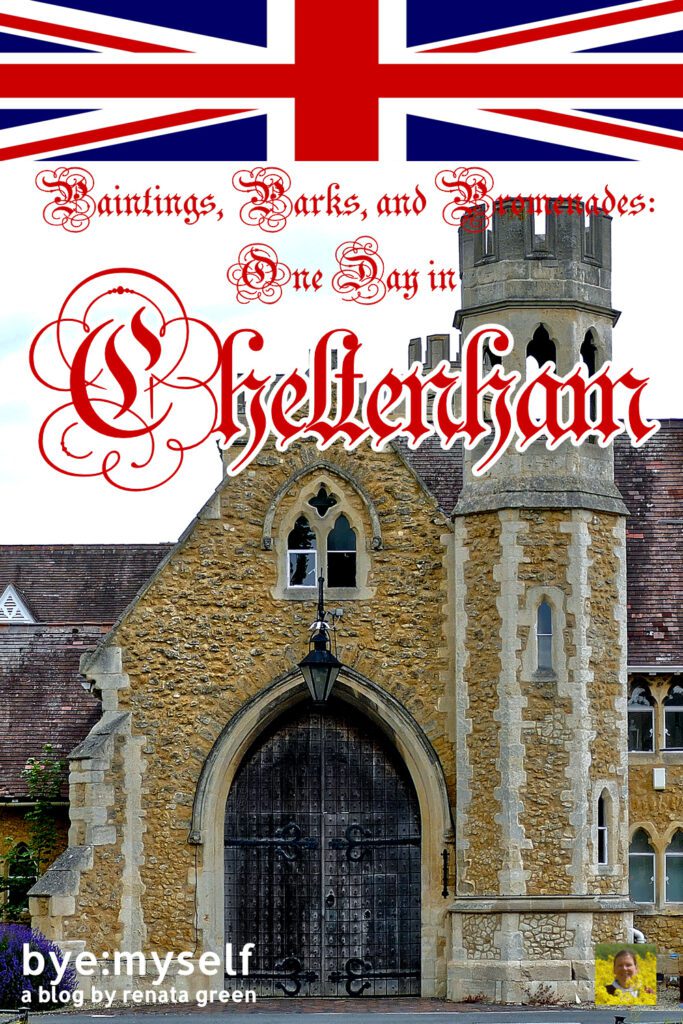
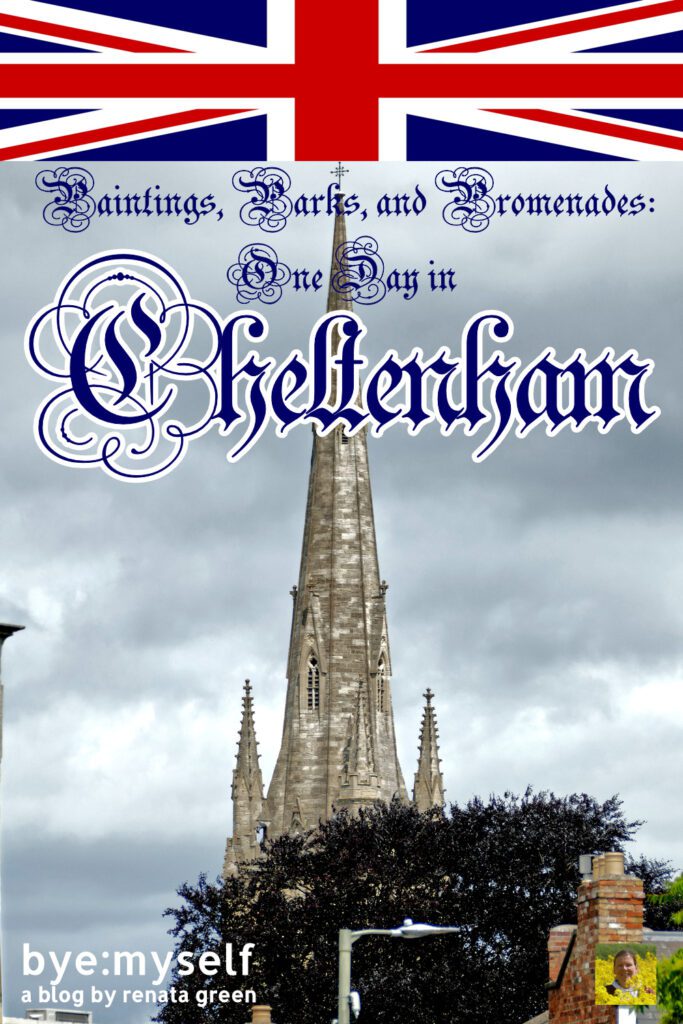
Did You Enjoy This Post? Then You Might Also Like These:
Best Street Art in LONDON – Part II: Shoreditch
Best Street Art in BRISTOL – Part II: North Street
A Day in BATH, the Most Beautiful Town in All of Britain
Best Street Art in BIRMINGHAM
24 hours in LONDON
Best Street Art in LONDON – Part I: Camden
Best Street Art in CHELTENHAM
Enchanting COTSWOLDS: Self-Guided Day Tour by Public Bus
* This is an affiliate link. Hence, if you book through this page, not only do you get the best deal. I also get a small commission that helps me run this blog. Thank you so much for supporting me!

